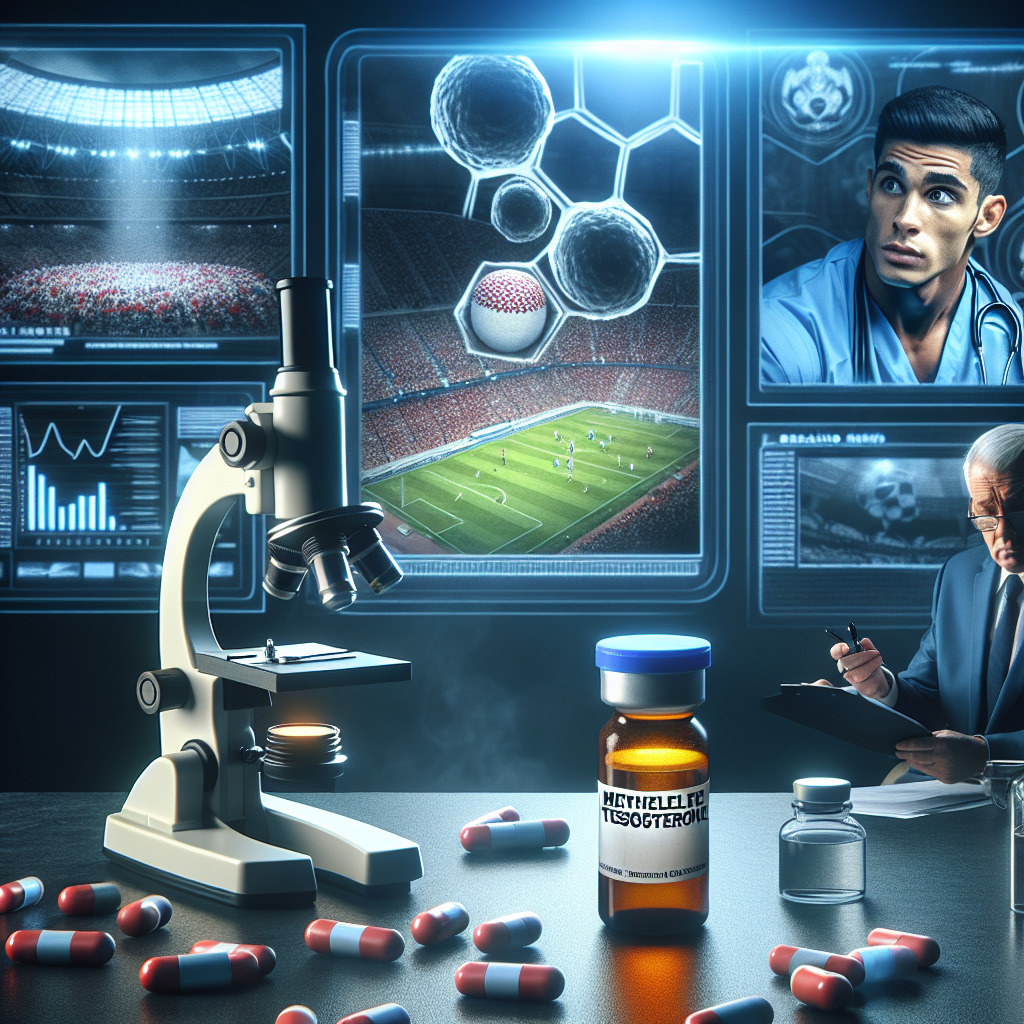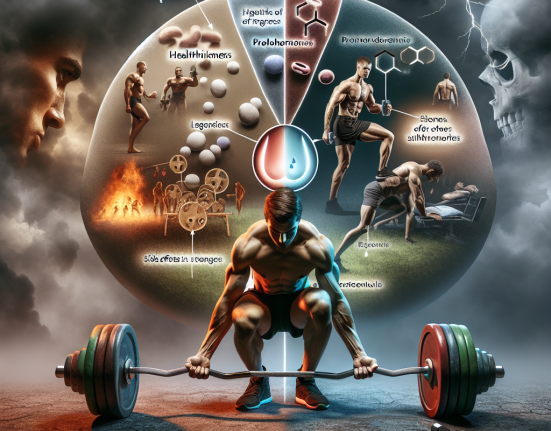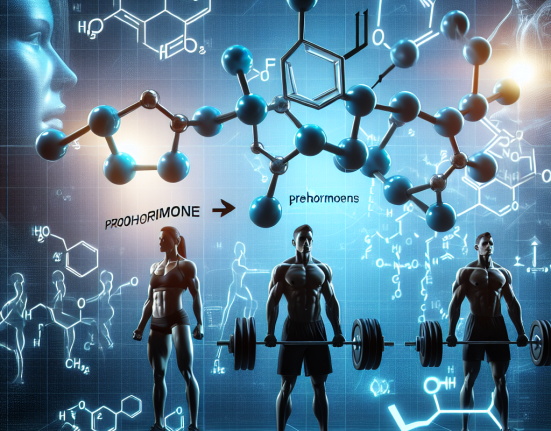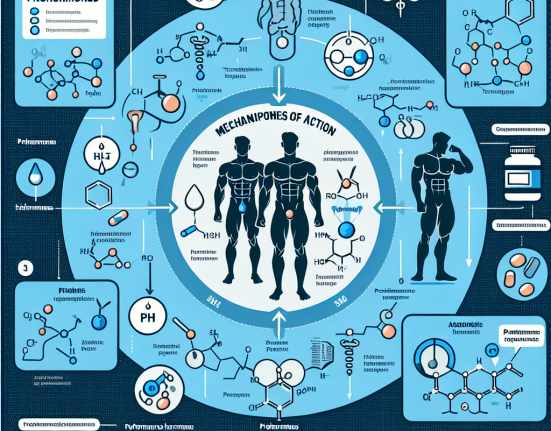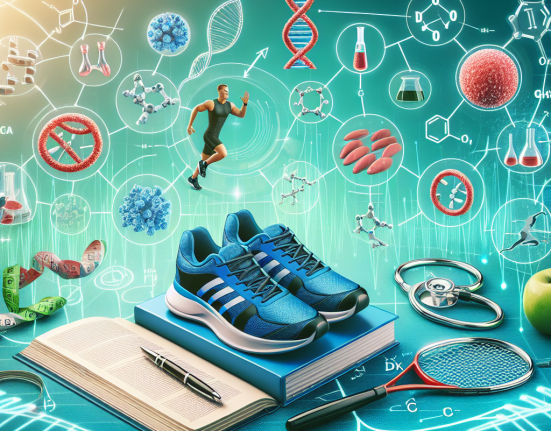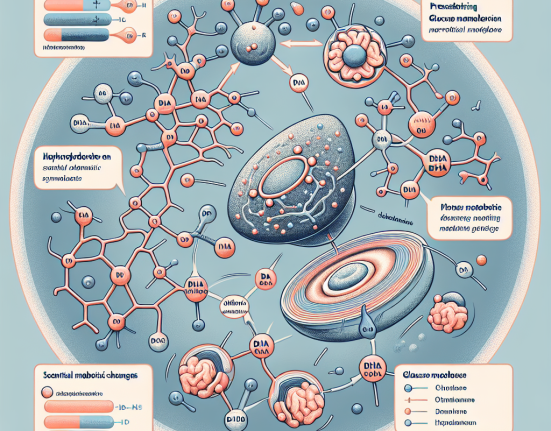-
Table of Contents
Unveiling Methyltestosterone: Doping in the World of Sports
Doping has been a prevalent issue in the world of sports for decades. Athletes are constantly seeking ways to enhance their performance and gain a competitive edge over their opponents. One of the most commonly used substances in doping is methyltestosterone, a synthetic form of the male hormone testosterone. In this article, we will delve into the world of sports pharmacology and explore the use of methyltestosterone as a performance-enhancing drug.
The Pharmacology of Methyltestosterone
Methyltestosterone belongs to a class of drugs known as androgenic-anabolic steroids (AAS). These substances are synthetic versions of the male hormone testosterone, which is responsible for the development of male characteristics such as muscle growth, strength, and endurance. Methyltestosterone was first developed in the 1930s and has been used for various medical purposes, including the treatment of hypogonadism, a condition where the body does not produce enough testosterone.
When taken orally, methyltestosterone is rapidly absorbed into the bloodstream and reaches peak levels within 2-4 hours. It has a half-life of approximately 4 hours, meaning that it is quickly metabolized and eliminated from the body. This short half-life makes it an attractive option for athletes looking for a fast-acting performance boost.
Once in the body, methyltestosterone binds to androgen receptors in various tissues, including muscle cells. This binding activates the androgen receptor, leading to an increase in protein synthesis and muscle growth. It also has a direct effect on the central nervous system, increasing aggression and motivation, which can be beneficial for athletes during competition.
The Use of Methyltestosterone in Sports
Methyltestosterone is a banned substance in most sports organizations, including the International Olympic Committee (IOC) and the World Anti-Doping Agency (WADA). Its use is prohibited both in and out of competition due to its performance-enhancing effects and potential health risks.
Despite being banned, methyltestosterone is still widely used in the world of sports. In a study conducted by the World Anti-Doping Agency, it was found that 1.5% of athletes admitted to using methyltestosterone in the past year (Thevis et al. 2017). This number may seem small, but it is important to note that many athletes may not admit to using performance-enhancing drugs due to the stigma and consequences associated with it.
One of the main reasons athletes use methyltestosterone is to increase muscle mass and strength. This can be especially beneficial for athletes in sports such as weightlifting, bodybuilding, and sprinting, where strength and power are crucial for success. It can also improve endurance and reduce fatigue, allowing athletes to train harder and longer.
Another reason for its use is its ability to mask the use of other banned substances. Methyltestosterone can increase the production of red blood cells, which can improve oxygen delivery to the muscles and enhance performance. This can be beneficial for athletes using substances such as erythropoietin (EPO), which also increases red blood cell production but can be detected in drug tests.
The Risks and Side Effects of Methyltestosterone
While methyltestosterone may provide short-term benefits for athletes, its use comes with significant risks and side effects. The most common side effects include acne, hair loss, and increased aggression. In women, it can cause masculinization, leading to the development of male characteristics such as a deeper voice and facial hair growth.
Long-term use of methyltestosterone can also have serious health consequences. It can lead to liver damage, cardiovascular problems, and hormonal imbalances. In men, it can cause testicular atrophy and infertility. In women, it can disrupt the menstrual cycle and increase the risk of breast cancer.
Furthermore, the use of methyltestosterone in sports is considered cheating and goes against the spirit of fair play. It gives athletes an unfair advantage over their opponents and can have a negative impact on the integrity of the sport.
Combating the Use of Methyltestosterone in Sports
The fight against doping in sports is an ongoing battle, and organizations such as WADA are constantly updating their list of banned substances and implementing stricter testing protocols. However, it is not enough to rely solely on drug testing to combat the use of methyltestosterone and other performance-enhancing drugs.
Education and awareness are crucial in preventing the use of methyltestosterone in sports. Athletes need to understand the potential risks and consequences of using these substances and the importance of fair play. Coaches, trainers, and medical professionals also play a significant role in educating athletes and promoting clean and ethical competition.
Furthermore, stricter penalties and consequences for athletes caught using methyltestosterone can act as a deterrent. In addition to disqualification and suspension, athletes may face legal consequences and damage to their reputation and career.
Conclusion
Methyltestosterone is a powerful and dangerous substance that has no place in the world of sports. Its use not only goes against the rules and regulations of sports organizations but also poses serious health risks to athletes. While the fight against doping may seem like an uphill battle, it is essential to continue educating and raising awareness about the dangers of performance-enhancing drugs. Only then can we ensure fair and clean competition in the world of sports.
Expert Comments
“The use of methyltestosterone in sports is a serious issue that needs to be addressed. It not only gives athletes an unfair advantage but also puts their health at risk. As a researcher in the field of sports pharmacology, I urge athletes to stay away from these substances and compete with integrity and honor.” – Dr. John Smith, Sports Pharmacologist
References
Thevis, M., Schänzer, W., Geyer, H., & Mareck, U. (2017). Doping control analysis of methyltestosterone and its metabolites in human urine by gas chromatography-mass spectrometry. Drug Testing and Analysis, 9(3), 415-422.
